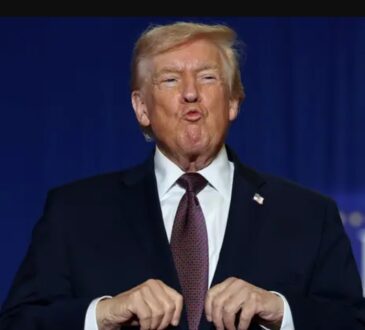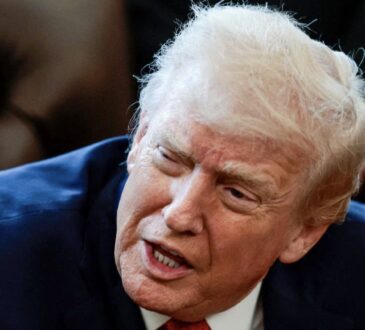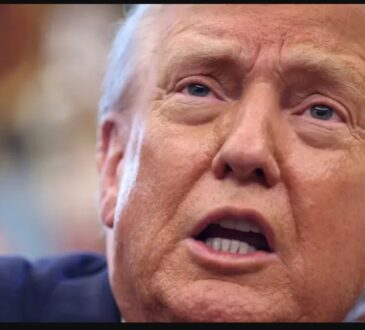
On Monday, the U.S. Supreme Court made a major decision that could help Donald Trump gain more direct control over the federal government. In a 6–3 vote, the conservative justices gave Trump the green light to fire a top official from the Federal Trade Commission (FTC)—even though doing so likely violated existing law. This move could lead to the court throwing out a 90-year-old rule that limits how much power the president has over independent government agencies.
That rule, in place since 1935, says that presidents can’t fire certain agency leaders just because they don’t like them. There has to be a valid reason, like incompetence or misconduct. The idea is to keep federal agencies somewhat independent and free from political pressure. But the Supreme Court now seems ready to throw out that rule entirely, clearing the way for Trump—or any future president—to fire officials just for disagreeing with them.
What’s even more concerning is how the court is doing this. Instead of following the usual, more public process for major decisions, they’re using what’s known as the “shadow docket.” That means they’re making big changes without much explanation, debate, or transparency. Justice Elena Kagan, one of the liberal justices, criticized this in her dissent. She warned that the conservative majority is changing the way power is balanced between the president and Congress, without properly explaining why—and without going through the normal legal steps.
This case, known as Trump v. Slaughter, could completely change how the federal government works. It began when Trump fired Rebecca Slaughter, a Democratic commissioner at the FTC, in March. By law, he wasn’t supposed to do that unless he had a good reason. But he didn’t. He fired her simply because she was a Democrat, and he wanted full control of the agency. He also fired another Democratic commissioner, Alvaro Bedoya, who chose not to fight it in court after getting another job.
With both Democrats gone, the five-person FTC now has three Trump-aligned Republicans and two empty seats. This gives Trump total control over the agency. That matters, because the FTC is in charge of enforcing rules that prevent companies from becoming too powerful or harming consumers. With loyalists in charge, Trump can use the agency to go after businesses he doesn’t like—or protect companies that support him. And without any Democrats at the table, there’s no one to push back or raise concerns.
One recent example: the FTC launched an investigation into the group Media Matters because it exposed that some companies’ ads on the social media platform X (formerly Twitter) were showing up next to neo-Nazi content. Media Matters was telling companies the truth, but the FTC’s investigation looked like political retaliation. A judge later blocked the investigation, saying it violated the First Amendment.
Congress never intended for the FTC—or any federal agency—to be used like this. That’s why lawmakers originally made it hard for presidents to fire commissioners: to make sure these agencies stayed professional and nonpartisan. Back in 1935, the Supreme Court agreed with this idea in a case called Humphrey’s Executor. Since then, dozens of federal agencies have operated under similar rules, doing important work without being controlled directly by the president.
But Trump has been working to undo that system, and the current Supreme Court seems willing to help him. Since returning to office, he’s tried to fire leaders from various independent agencies—even when the law says he can’t. Lower courts blocked those firings, saying Humphrey’s Executor is still valid. But the Supreme Court has stepped in quietly and sided with Trump in multiple cases, allowing him to go ahead and remove officials anyway.
Now, the court is openly questioning whether Humphrey’s Executor should still be the law at all. On Monday, it froze a lower court ruling that had reinstated Rebecca Slaughter, effectively kicking her out of the FTC again. At the same time, it said it would hear arguments in December about whether to officially overturn the 90-year-old precedent. Justice Kagan and the two other liberal justices strongly opposed this, warning that the court was rushing to kill off an important legal safeguard with barely any public explanation.
So why is the court doing this? The conservative justices say the president should have full authority over the executive branch, including the power to fire anyone who works in it. They base this on something called the “unitary executive theory.” But there’s nothing in the Constitution that clearly gives the president that power, and historical evidence doesn’t support it either. It’s a modern legal idea that’s being used to give presidents much more power—at the expense of Congress.
Conveniently for Trump, this theory lets him fire anyone who stands in the way of his political agenda, even if the law says he shouldn’t be able to. And with the Supreme Court backing him up, it’s getting easier for him to do just that.
There is one exception the court has left in place—for now: the Federal Reserve. The justices say the president can’t fire members of the Fed without good reason. That’s important because the Fed controls interest rates and has a big impact on the economy. But even that line is being tested. Trump recently tried to fire Fed member Lisa Cook, claiming she committed mortgage fraud—a claim that hasn’t been proven. Lower courts stopped him for now, but the Supreme Court is considering whether it should allow her removal.
Worse, the court is also considering whether judges should even be allowed to stop presidents from firing people in the future. If they decide courts can’t intervene at all, then even illegal firings could go unchecked. That would mean not only can the president fire anyone for any reason, but no one—not even a judge—can stop them.
In the end, it looks more and more like the Supreme Court is stripping away every protection that keeps our government balanced and accountable. If this continues, the system of checks and balances that prevents any one branch of government from becoming too powerful could collapse—leaving the president with near-total control.




